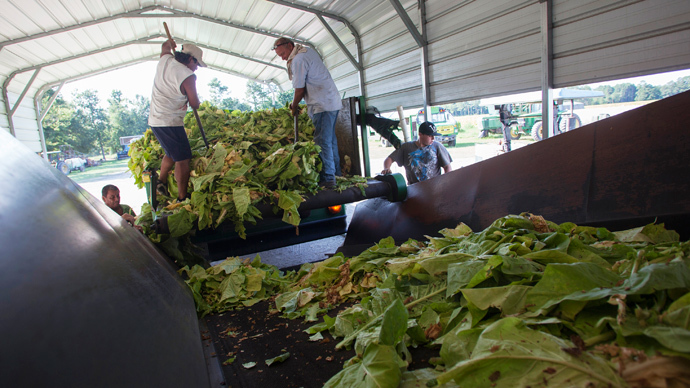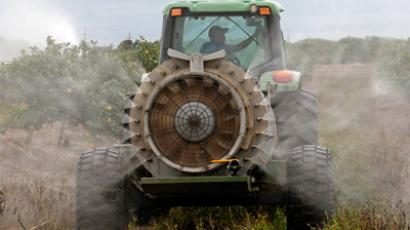US farm income approaching record high despite falling farming household income

American farmers will earn approximately $120.6 billion in net income in 2013, a small increase over 2012 that makes this year’s total the second-most in decades, despite a drop in median household income for farmers.
The income total is slightly lower than the $128.2 billion the US Department of Agriculture forecast in February. The drop is evidence that this year’s record harvest numbers will lead to a surplus and hurt individual farm incomes. Earlier this month the USDA released numbers indicating that farmers are on track to bring in the largest corn crop ever and the third largest soybean crop.
The $120.6 billion income is up six percent over the revised estimate for 2012, $113.8 billion, according to a USDA report published Tuesday on the department’s website.
The USDA expects 13.8 billion bushels of corn, a full 28 percent increase since 2012, with soybean farmers expected to reap 3.26 billion bushels, an eight percent increase.
Patrick Westhoff, director of the Food and Agricultural Policy Research Institute at the University of Missouri, told Bloomberg that the USDA numbers tell a “very, very good story, and a very positive story for much of US agriculture.
“A bigger question is, what is it going to look like a year from now?” he said, wondering how the lower revenue for farming families will impact their ability to produce in the future.
These figures come as Congress has debated cuts to the US Farm Bill that funds the national food stamp program, regulates agricultural policy.
Lawmakers have a September 30 deadline to decide on the bill and, if they do not act in the mere nine working days scheduled in the upcoming month, farmers risk losing government and insurance and drought relief benefits altogether. Milk prices would also increase throughout the US.
The federal government will dole out $11.1 billion in direct payments to farmers in 2013, another jump from the $10.6 billion paid in 2012.
The current incarnation of the Farm Bill pending in the Senate and the House of Representatives, though, would slash such payments and increase crop insurance assistance, which helps farmers protect against loss in the event of unforeseen circumstances.
Despite those immediate concerns, livestock producers have seen their land value rise over each of the past three years.
“In fact, most farmers are wealthier than the average
American, with a household income of $87, 289 in 2011 – 29
percent higher than the $67,677 average for all US
households,” wrote The Week magazine. “And yet many still
get taxpayers dollars to protect their incomes. In fact, the farm
bill pays some farmers not to grow crops – in order to avoid
oversupply that would drive food prices down for the rest of
us.”














